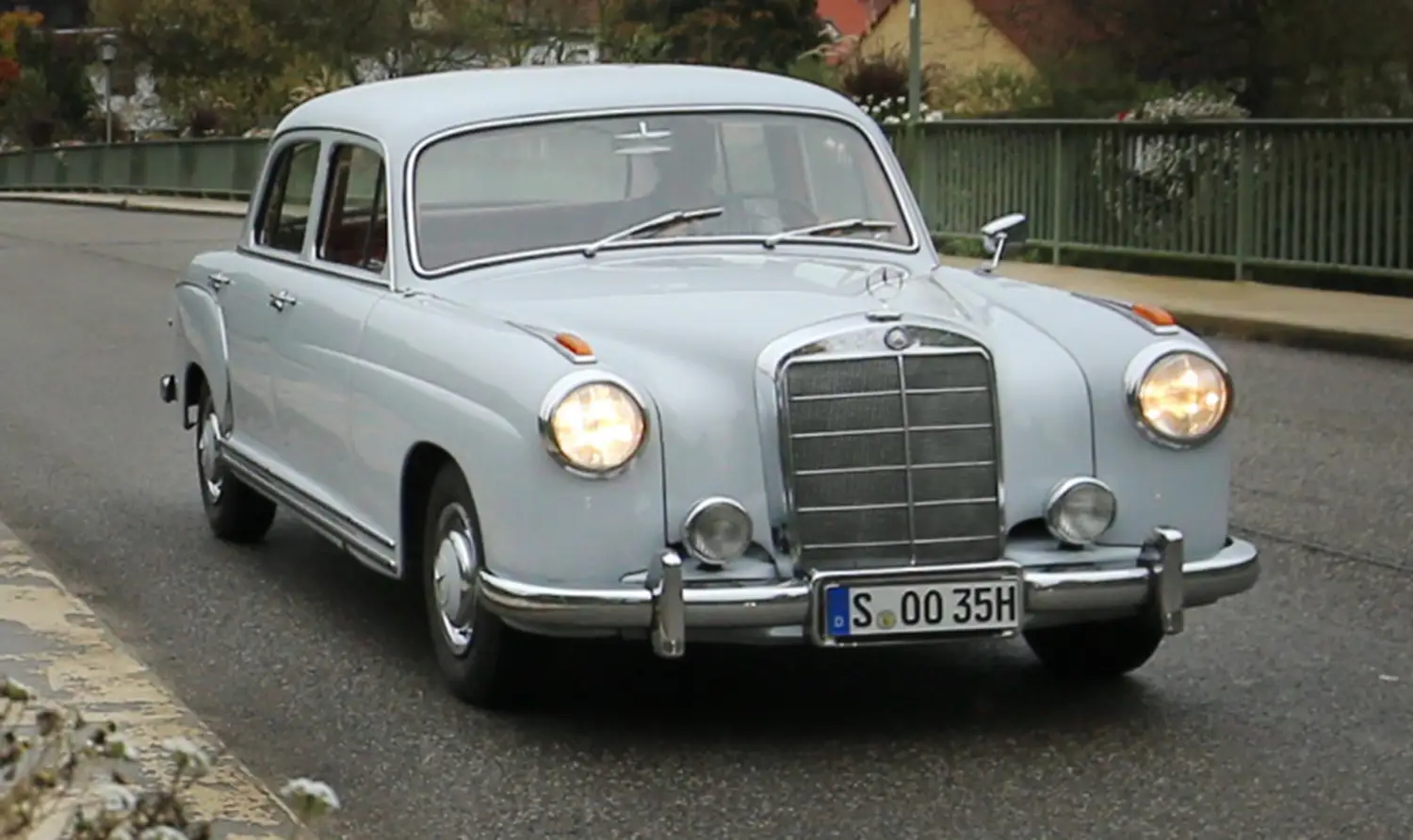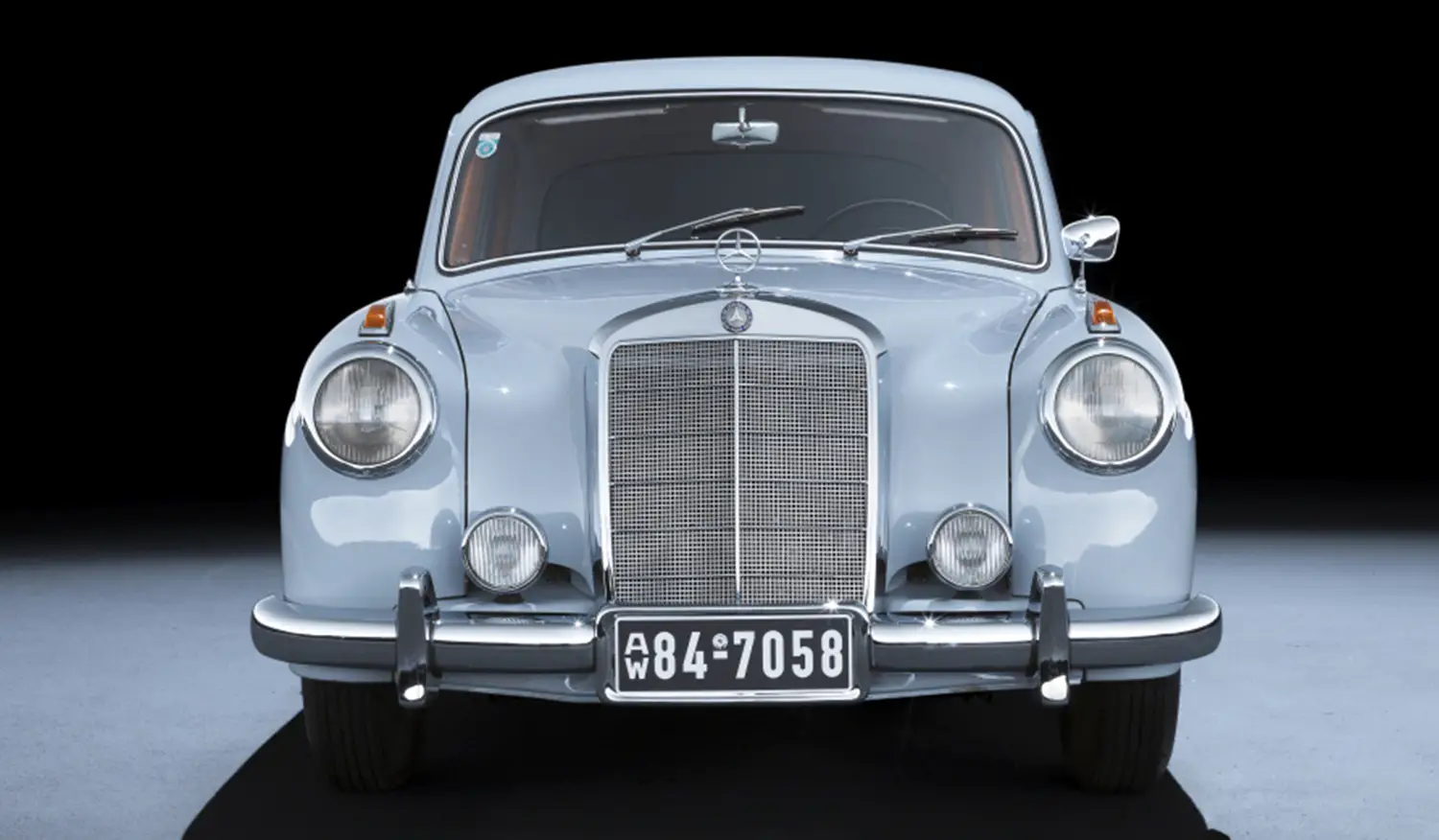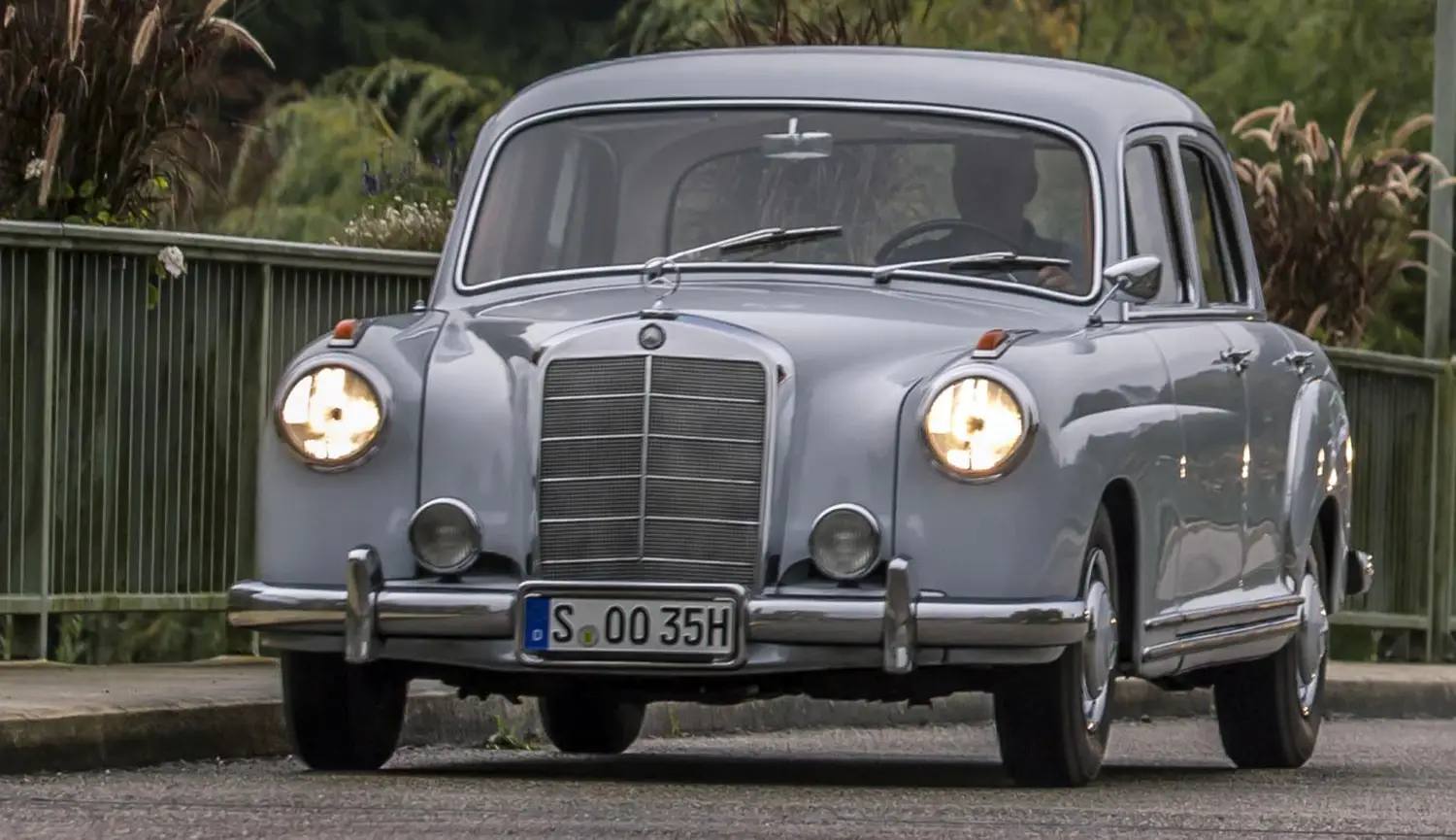
In 1955 the 1955 Mercedes-Benz 220 “Ponton” W 180 took centre stage as Mercedes-Benz’s statement of modern luxury and engineering. The 220 “Ponton” W 180 embodied a shift in design, manufacturing and performance that would influence the marque for years to come.
Origins of the “Ponton” Design
After World War II, automotive design rapidly evolved. The 1955 Mercedes-Benz 220 “Ponton” W 180 emerged from this climate. Internally designated as the W180, the initial 220 a model was introduced in March 1954 and built until April 1956. The full W180 production run, including the later 220 S, spanned until 1959.
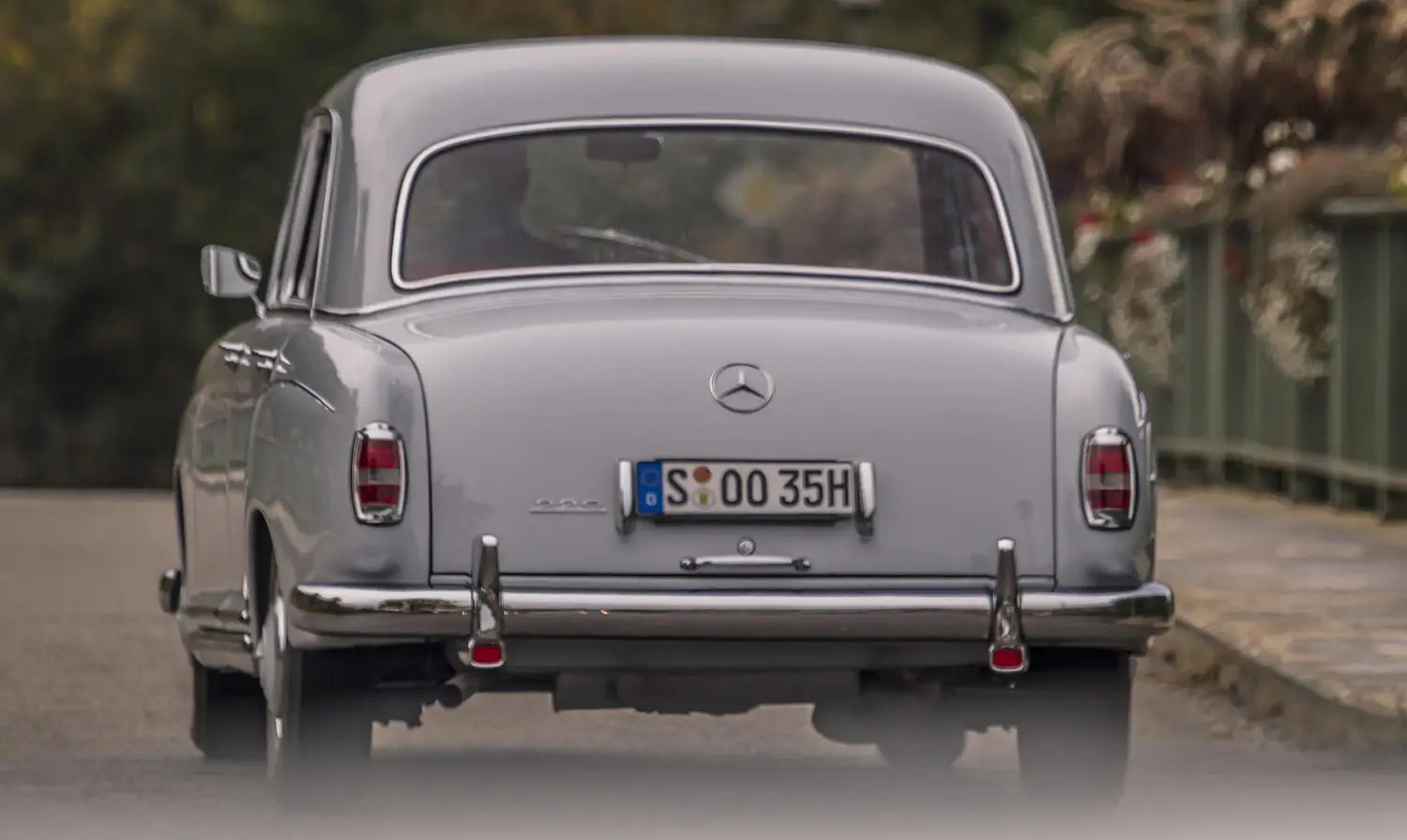
Its nickname “Ponton” refers to the pontoon-shaped fenders and unified body design that replaced the separately articulated wings common before. In effect, this model represented a break from the past and set a new template for post-war Mercedes-Benz saloons.
Design and Structural Innovation
The 220 “Ponton” W 180 featured a unitary body, also known as a monocoque construction, which improved rigidity and production efficiency. Compared to its four-cylinder sibling, the W120/W121 “small Ponton”, the W180 had a wheelbase extended by 170 mm to accommodate the six-cylinder engine and offer increased rear legroom (70 mm) while allocating 100 mm for extra front length. Stylistically the W180 remained sober and refined, Mercedes offered luxury through engineering rather than flamboyant styling.

Model Evolution & Key Highlights
The initial version, the 220 a (W180 I), produced approximately 85 hp from the 2.2-litre inline-six and ran from 1954 to April 1956. In March 1956 the upgraded 220 S (W180 II) arrived with twin-carburettor versions delivering about 100 hp and later up to 106 hp after 1957. During its production run the six-cylinder W180 models sold around 84,645 units. The model’s influence stretched beyond production: it introduced body and drivetrain architecture that would carry into later Mercedes-Benz luxury saloons.

Technology Spotlights
Notable features include the introduction of a hydraulic automatic-clutch system called “Hydrak” (available from 1957) which foreshadowed full automatic transmissions in later luxury cars.The “Ponton” body shape also symbolised Mercedes-Benz’s transition to modern styling and crash-worthy units, rather than the pre-war step-front fenders and separate wings. Collectors often regard this era as a turning point for the brand: the six-cylinder Ponton models laid the groundwork for the later W111 “Fintail” and beyond.
Power, Engine Specs & Performance
The 1955 Mercedes-Benz 220 “Ponton” W 180 220 a used a 2.2 litre (2195 cc) inline-six engine, producing 85 hp at 4800 rpm. With the 220 S version the output rose to 100 hp (and later 106 hp) with twin-carburettors and improved compression ratio. Top speed for the 106 hp variant was about 160 km/h (99 mph) and 0-100 km/h took roughly 17 seconds. These figures may seem modest today but in the mid-1950s they placed the W180 among the more capable luxury saloons.
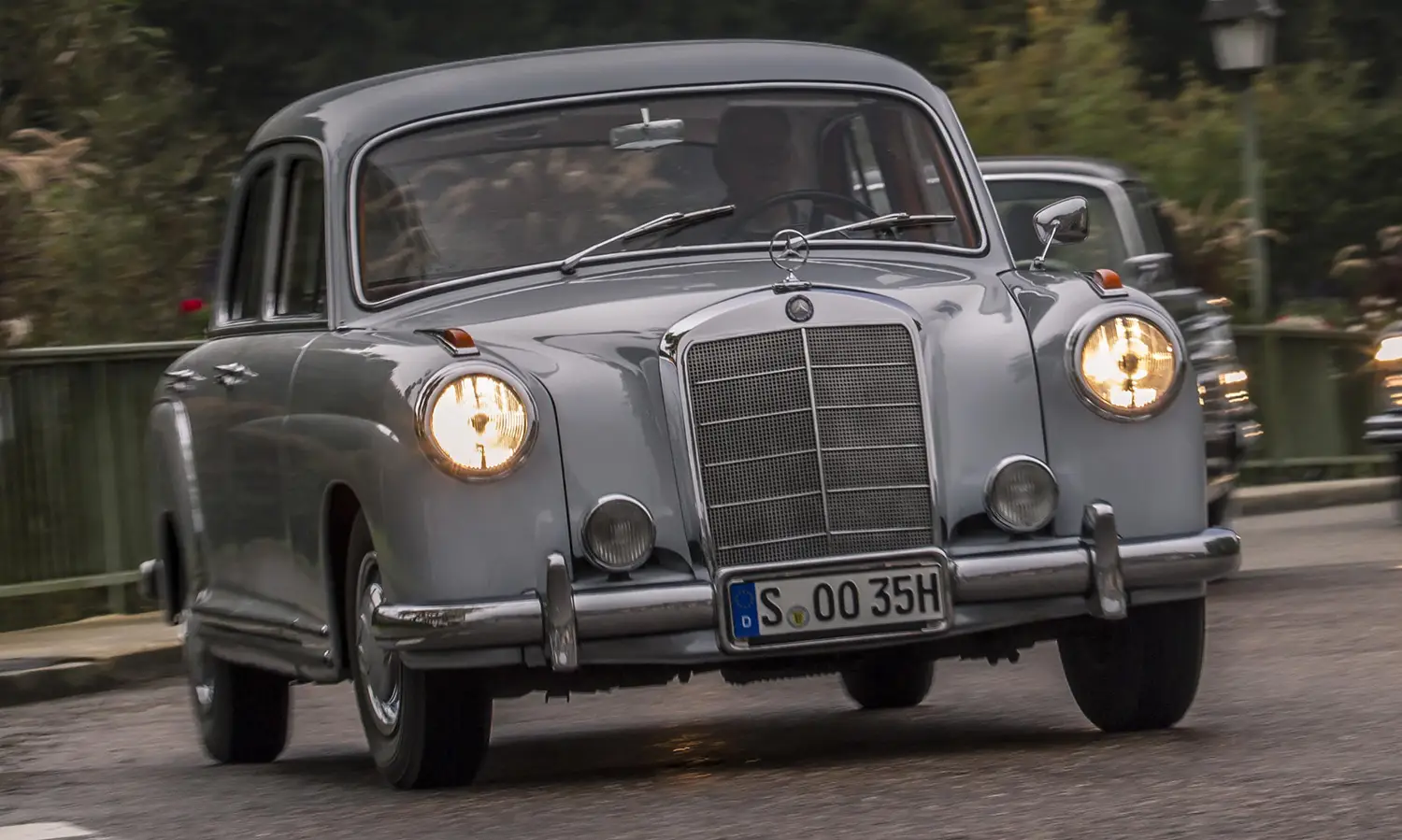
Legacy and Influence
The 220 “Ponton” W 180’s legacy lies in its blend of engineering, comfort and modern design. It shifted Mercedes-Benz into a new era of unit-body construction and smoother styling. Its success validated six-cylinder power in mid-size luxury saloons and helped shape expectations for Mercedes’ post-war models. Enthusiasts note the W180 as a foundational model for the brand’s later S-Class lineage, partly because it introduced key technologies and body architecture that carried on.

In summary, the 1955 Mercedes-Benz 220 “Ponton” W 180 holds an important place in automotive history, not because of dramatic styling or extreme performance, but because of its measured advancement of design, engineering and luxury in the mid-1950s.
Disclaimer: Content on this site is for informational purposes only. Vehicle specs, pricing, and availability may change. Always verify details with official sources before making decisions. Opinions are those of the authors.
Source: Mercedes-Benz
